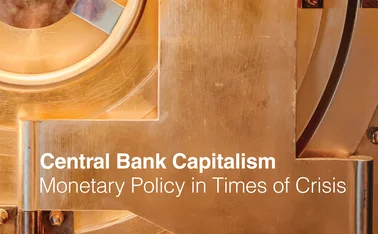
Fed’s unconventional policies similar to measures in 1920s, says research
Market operations early in the 20th century more than tripled Fed’s Treasury portfolio

The unconventional policies the Federal Reserve implemented to respond to the financial crisis of 2007–09 are similar to the tools used by the central bank in the 1920s, research published by the Fed says.
“Unconventional” Monetary Policy as Conventional Monetary Policy: A Perspective from the US in the 1920s by Mark Carlson and Burcu Duygan-Bump focuses on the three main instruments the Fed resorted to in the 1920s: the discount window; purchases of bankers’ acceptances; and purchases of
Only users who have a paid subscription or are part of a corporate subscription are able to print or copy content.
To access these options, along with all other subscription benefits, please contact info@centralbanking.com or view our subscription options here: subscriptions.centralbanking.com/subscribe
You are currently unable to print this content. Please contact info@centralbanking.com to find out more.
You are currently unable to copy this content. Please contact info@centralbanking.com to find out more.
Copyright Infopro Digital Limited. All rights reserved.
As outlined in our terms and conditions, https://www.infopro-digital.com/terms-and-conditions/subscriptions/ (point 2.4), printing is limited to a single copy.
If you would like to purchase additional rights please email info@centralbanking.com test test test
Copyright Infopro Digital Limited. All rights reserved.
You may share this content using our article tools. As outlined in our terms and conditions, https://www.infopro-digital.com/terms-and-conditions/subscriptions/ (clause 2.4), an Authorised User may only make one copy of the materials for their own personal use. You must also comply with the restrictions in clause 2.5.
If you would like to purchase additional rights please email info@centralbanking.com test test test







